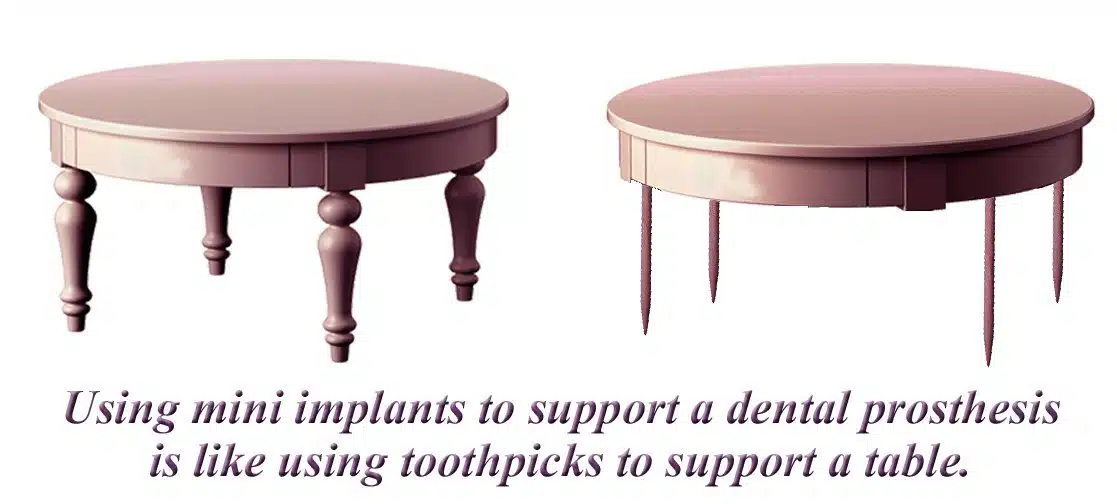Just exactly what are Mini Dental Implants and how are they different from standard implants?
Mini dental implants have filtered into the lingo of dental solutions, but as their name indicates, they are less invasive, less costly but also less likely to support a long term smile solution.
Principles of engineering naturally dictate that anything requiring support has the best possible anchor. Since the purpose of the dental implant is to take the place of the root of a natural tooth, the stronger the implant, the more stable and enduring the restoration built upon it will be.
Mini-implants are usually less than 2.5 mm in diameter. Biomedical engineers suggest that a dental implant be at least 3.75mm in diameter in order to support the forces of biting and chewing. Pi Dental Center has a long history of success using Nobel Biocare Brånemark Implants starting at 7mm in length and having diameters of 3.75 to 4.0 mm. Our board certified prosthodontists do not recommend mini-implants for any application.
The mission of the Pi Dental Center has always been to provide the very best possible treatment plan for every patient. We understand that maintaining a healthy and sparkling smile can sometimes be a costly investment and we feel we respect our patients’ resources best when we offer what most predictably will have significant longevity.
Many Pi dental implant patients sport a prosthetic smile that is beyond twenty years old. With good oral hygiene at home and regular check-ups, most patients can reap the benefits of their investment for a lifetime with minimal additional financial outlay. While mini-implants may have the appeal of a less expensive quick fix, they are unlikely to remain a satisfactory support system over the long term.
The main goal of implant placement is to provide strong solid support for non-removable teeth. One of the most important factors in determining a patient’s candidacy for implant placement is bone quantity. The more bone a patient has in the area of implant placement, the better the chance of success. An implant replicates the function of the root of a tooth. When a root resorbs, or shrinks, it cannot support the tooth, and the tooth becomes loose and requires extraction. To achieve the best support for an implant-supported prosthesis, the largest implant that will fit into the area is used. A carpenter would not use toothpicks to support a table. Obviously that the table would eventually collapse! Using mini implants to support a dental prosthesis is similar to using toothpicks to support a table. The normal activities of the mouth such as chewing require an enormous amount of force.
Joanne Balshi


It is great article.Mini implants are the wave of the future and are often a better than a bridge or dentures. Mini implants don’t require surgery like dentures so the prosthetic tooth can be stacked inside hours and the healing procedure is much speedier. Healing time is reduced from months to days. Ordinarily the strategy can be finished in one visit and the greater part of our patients can eat typically the same evening. The mini implants procedure is generally basic: it is performed with local anesthetic, takes one and only to two hours, is essentially easy and recuperating time is short. Any inconvenience from the strategy as a rule goes inside 48 hours and regularly there is little soreness by any means. Most patients can simply ahead and eat two or three hours after the surgery.
Mini implants were originally developed as a “temporary implant.” Mini implants do not have the same prosthetic versatility as two-piece regular diameter implants. While those implants are less expensive, you “get what you pay for.” Using regular diameter two-piece implants is the optimal way to ensure a predictable successful result.
Glenn Wolfinger, DMD, FACP
Many patients have come to me asking for a mini-implant treatment, and I have always advised them to get a proper implant done. I also do not do mini implant treatments, as I always think of the good of the patient before myself.